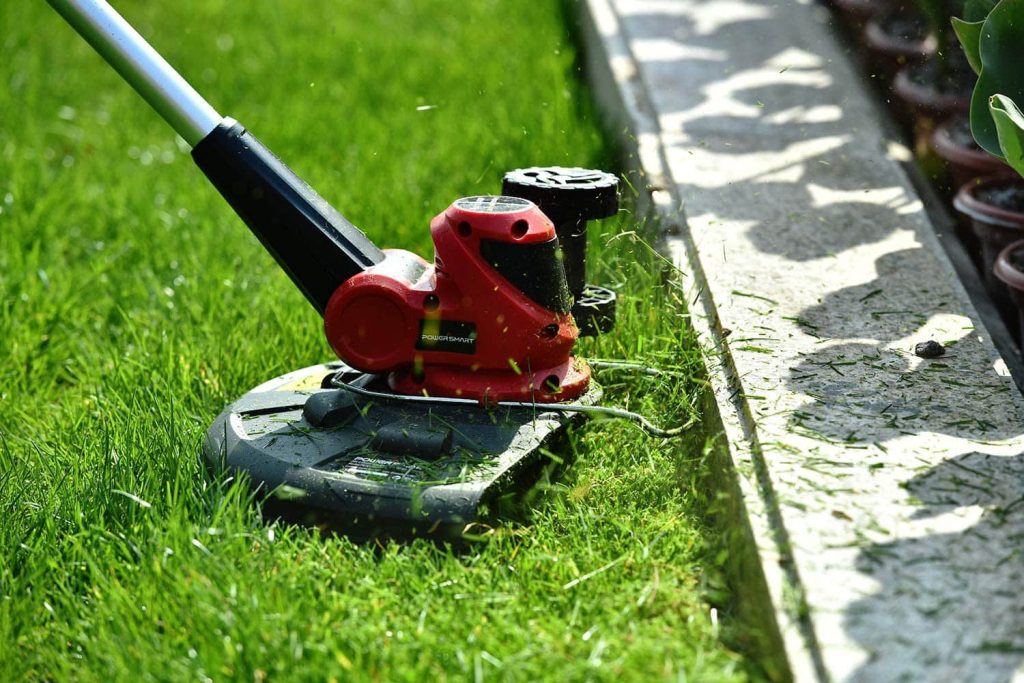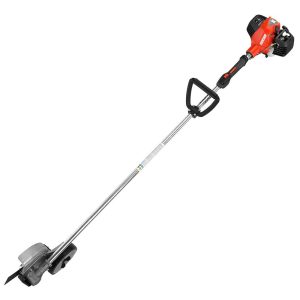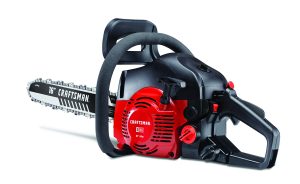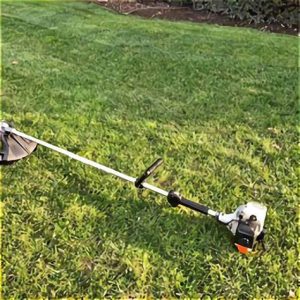11 Reasons Why an Edger Starts Then Stops Working
It’s annoying when your lawn edger refuses to stay on and you’re trying to get it looking perfect.
When air, fuel, and spark are insufficient, an edger will start and then die.
Problems with the air filter, spark arrestor, cooling system, choke, fuel filter, fuel line, carburetor, spark plugs, or ignition coil could all be to blame.
To avoid injury, disconnect the spark plug wire before beginning maintenance. Read and abide by the manual’s safety instructions at all times.

Before diagnosing, repairing, or operating, be sure you’ve read and understood all of the safety recommendations in the equipment’s operator’s manual. If you don’t feel confident in your abilities or lack the necessary knowledge to make the repair securely, you should get some help from a specialist.
Table of Contents
Here’s Why an Edger Gets Started and Quickly Fail
Incorrect Choke Position
To limit the airflow into the engine, a choke is installed. On your edger, you’ll discover a choke lever or knob.
To get a cold engine going, you need to let the fuel run rich, or use a higher ratio of gasoline to air. A cold engine cannot be started until the choke lever is in the CHOKE ON position, which restricts airflow.
As soon as the engine reaches operating temperature, the choke should be turned off to ensure proper air flow.
When starting a warm engine, make sure the choke lever is in the OFF position.
The solution is to check that the choke is in the on and running positions. If the choke isn’t set correctly, your edger won’t keep going.
Clogged Air Filter
If you want a healthy engine, you need a functioning air filter. It prevents harmful dirt and debris from entering and damaging the engine.
If you use your air conditioner more frequently than the average homeowner, you should change the filter more frequently than once a year. It’s not enough to just change the air filter; it needs to be checked and cleaned on a regular basis.
If you don’t clean or replace your air filter regularly, dirt and debris will accumulate and reduce airflow. The motor will stop working if it is deprived of sufficient air.
If your air filter is severely soiled or broken, you should get a new one.
Never, ever, ever, run the edger without a filter, not even to get the job done. Doing so risks contaminating the engine with dirt, which could lead to expensive repairs.
As a SOLUTION, I have detailed how to clean two types of filters typically found on edgers. Check the owner’s manual if you don’t know what kind of filter your machine has or how to clean it.
How to Cleanse a FELT Edger Air Filter:
- Taking off the air filter’s cover.
- Carefully take off the air filter, keeping any debris from falling into the intake.
- Remove any leftover dust or debris from the air filter housing by wiping it down.
- Clear the filter of dust by brushing it.
- Use water and a gentle detergent to clean.
- You should run pure water through the filter and then let it dry out.
- Put in the new filter.
- Fix the air filter cover back on.
How to Cleanse a FOAM Edger Air Filter:
- Get rid of the housing cover for the air filter.
- Carefully take off the air filter, keeping any debris from falling into the intake.
- Remove any lingering dust from the case.
- If the filter is not brittle, developing black blotches, or torn, you can reuse it. If you notice any of these issues, it’s time to replace your old foam air filter.
- Clean a reusable filter so it can be used again. To wash away grime, just use water and some gentle dish soap. Let it run until the water is clear.
- Drain and dry flat.
- Apply oil when the coating is dry. Squeeze to get rid of the extra oil.
- Put in the new filter.
- Put the cover back on.
Due to the wide variety of edger models on the market, the specifics of how to clean your edger’s air filter can be found in the machine’s user manual.
Cooling System Plugged
The edger could malfunction if the engine overheats. The engine needs a constant supply of cool air flowing around it to function properly.
The solution is to clean the area around the air intakes and cooling fins of any debris, including grass clippings. First, turn off the engine and wait for the spark plug to cool.
Take off the engine cover and clean the area around the cylinder’s outside edge. Remove the engine cover and clean the cylinder fins. Maintaining a clean edger ensures that fresh air may flow freely to the motor.
Bad or outdated fuel
The quality of gasoline that has been stored for more than 30 days may degrade.
The fuel system can become clogged with varnish and sticky deposits from moisture in old fuel, leading to the breakdown of individual parts. Edgers are susceptible to damage from gasoline containing ethanol.
Use unleaded fuel with an octane value of 89 or above and no more than 10% ethanol. Your fuel system and engine will last longer and perform better with fuel that contains little or no ethanol.
When fuel won’t be used within 30 days, add a stabilizer like Sea Foam Motor Treatment.
Most modern edgers are powered by 2-cycle, 2-stage engines that call for a blend of gasoline and oil before being fueled up.
Manufacturers are also starting to develop 4-cycle, 4-stage edgers. For these engines, combining oil and gas is not recommended.
- The fuel tank of a 2-cycle engine must be filled with a combination of gasoline and oil.
- To operate, 4-cycle engines need unleaded gas. The oil and gas tanks each have their own dedicated fill points. Except for the STIHL 4-MIX engines, which run on a combination of gas and oil, gasoline is the only legal fuel for power tools.
Find out what kind of motor your edger has before you wreck it. Using the improper fuel in your edger can render it unusable.
The solution is to empty the gas tank. New fuel and the fuel additive should be combined in a gas can. Put the concoction in the gas tank.
The Fuel Filter Is Clogged
There is a little filter inside the gas tank that prevents foreign matter from entering the gasoline system. It is connected to the fuel line’s terminus. If the filter isn’t changed frequently enough, it can become clogged.
A blocked filter can prevent your edger from starting by reducing fuel flow. Every year, or more often if necessary, you should have the fuel filter replaced.
When used commercially, it may need to be replaced as often as every three months.
SOLUTION:
Edger Fuel Filter Replacement
- To prevent dirt and debris from entering the tank, wipe the area around the gasoline cap.
- Take the lid off.
- Remember where the old filter was so you can put in the new one in the right spot.
- Take remove the gasoline filter from the tank. The filter can be easily retrieved using a clean, bent wire.
- Take the filter out of the gasoline line once you’ve taken it out of the tank. The retaining ring must be protected at all costs. Maintain the fuel line ring.
- To install a new fuel filter, simply insert the male end into the gasoline line and tighten the retaining ring until the fuel filter is secure.
- Return the fuel filter to its original location inside the tank.
- Put the gas cap back on.
Fuel Line Blockage
When old fuel deposits build up in the fuel lines, they restrict the fuel’s ability to flow freely.
If you discover a clogged fuel line, you can attempt clearing the line with carburetor cleaning to loosen the obstruction and compressed air to blow it out.
The solution is to get a new gasoline line if the old one is dry, cracked, or broken.
The Fuel Tank Vent is Clogged
As the fuel in your edger is used up, air is drawn in through a vent in the machine. Your edger won’t work because the fuel tank will form a vacuum preventing fuel from escaping.
If your edger suddenly stopped working and won’t start again, a clogged fuel vent could be to blame.
Clogged fuel tank vents can be found with this simple test:
- Prepare a flat platform for the edger.
- Start the edger by releasing air from the fuel cap.
- Keep the fuel tank sealed at all times.
- The fuel cap should be tightened if the edger begins and runs. You may verify the tank vent is the issue by recreating the situation in which the edger loses power and stops working until you release the cap and let air into the tank.
Put in a new fuel tank vent in its place. This tiny piece can be located on the gasoline cap or attached to the fuel line leading from the tank.
The Carburetor Is Unclean
Your edger wouldn’t run without the carburetor properly blending the gasoline and air it needs. When the channels get clogged up, the tiny parts stop working properly.
If the fuel-to-air ratio is off, the edger may have a hard time getting going or perhaps give up. If your carburetor is clogged, you can try cleaning it to see if it helps.
If cleaning the carburetor does not solve the problem, you may need to rebuild it (if rebuild kits are available for your carburetor) or replace it.
SOLUTION: Weigh the price of a new edger against the price of a new carburetor and labor before deciding to replace the carburetor in your edger.
It may be more cost-effective, time-efficient, and convenient to buy a brand-new edger instead of repairing your old one.
A Spark Plug Is Dirty or Broken
A dead engine could be the result of a spark plug that is either worn out or unclean and is no longer providing a consistent spark. Check the spark plug’s condition by removing it.
The spark plug needs to be replaced if the tip is black, the electrode is burned, or the porcelain is fractured. You might try cleaning it with a wire brush if the dirtiness is minimal.
Make sure the electrode gap is set up according to the manufacturer’s guidelines. If the spark plug is functional and the gap is correct, you can put it back in.
Do not reconnect the spark plug wire until you have finished making all necessary adjustments.
Bad Ignition Coil
A short can occur if the ignition coil’s winding comes loose. This prevents the necessary voltage from reaching the spark plug, preventing it from igniting. Your edger will eventually stop working if you do this.
The problem can be solved by using an ohmmeter to look for a break in continuity and thus identify a defective ignition coil. If you detect a crack in the ignition coil, you should replace it.
Spark Arrestor with Plug
Your edger’s muffler has a tiny metal screen installed for your protection. This is fitted so that the edger’s exhaust doesn’t blast out and burn someone or spark a fire.
As carbon accumulates on the screen, airflow is impeded. Your edger will become unusable and sluggish as a result of this.
The spark plug wire needs to be disconnected. The spark arrestor screen on most edger models is located behind the engine cover and the engine exhaust cover. To clean the spark arrestor screen, gently take it out of its housing and scrub it with a wire brush.
If the screen is too dirty to be cleaned effectively, or if it is broken or has a hole in it, you should get a new spark arrestor screen.
If you are unable to locate the spark arrestor screen or if your lawn edger continues to malfunction, it is recommended that you take it to a service shop or small engine specialist in your area.







